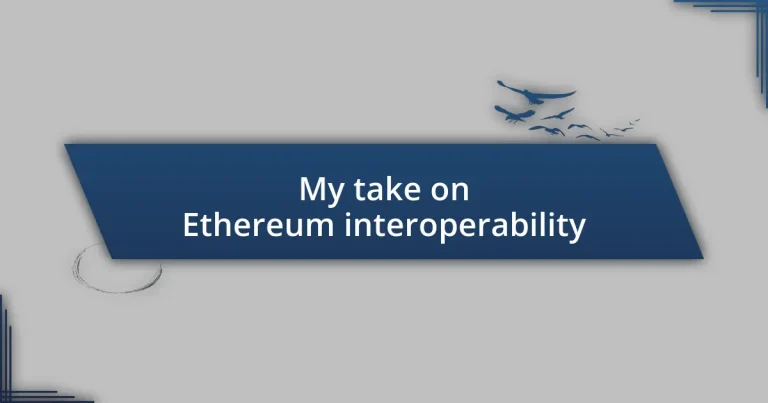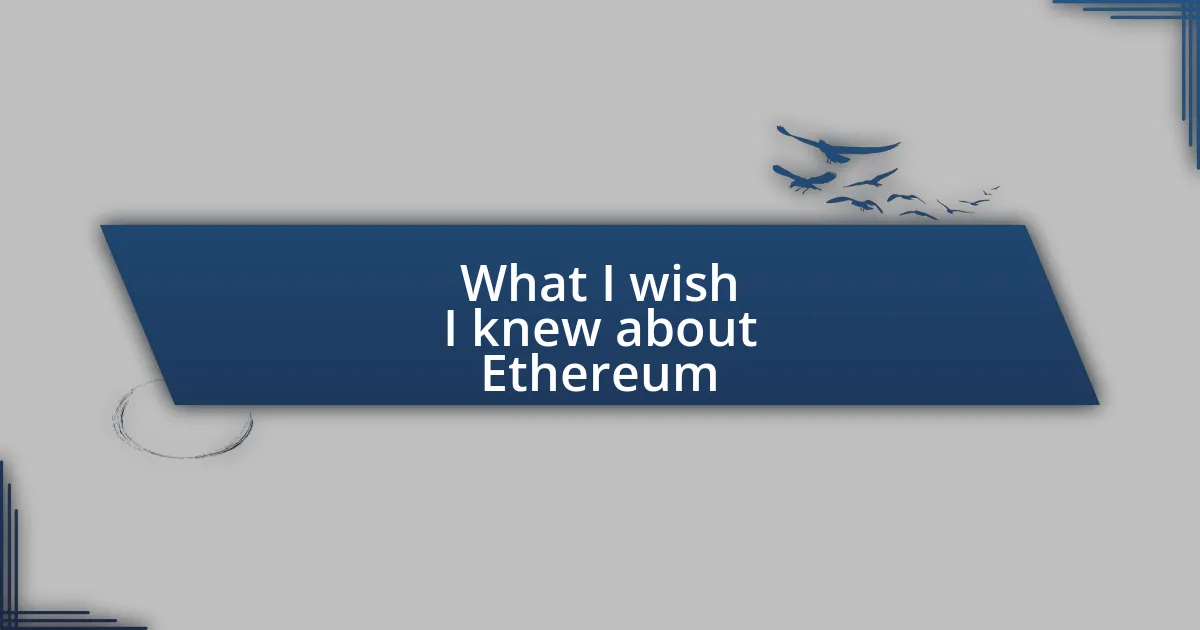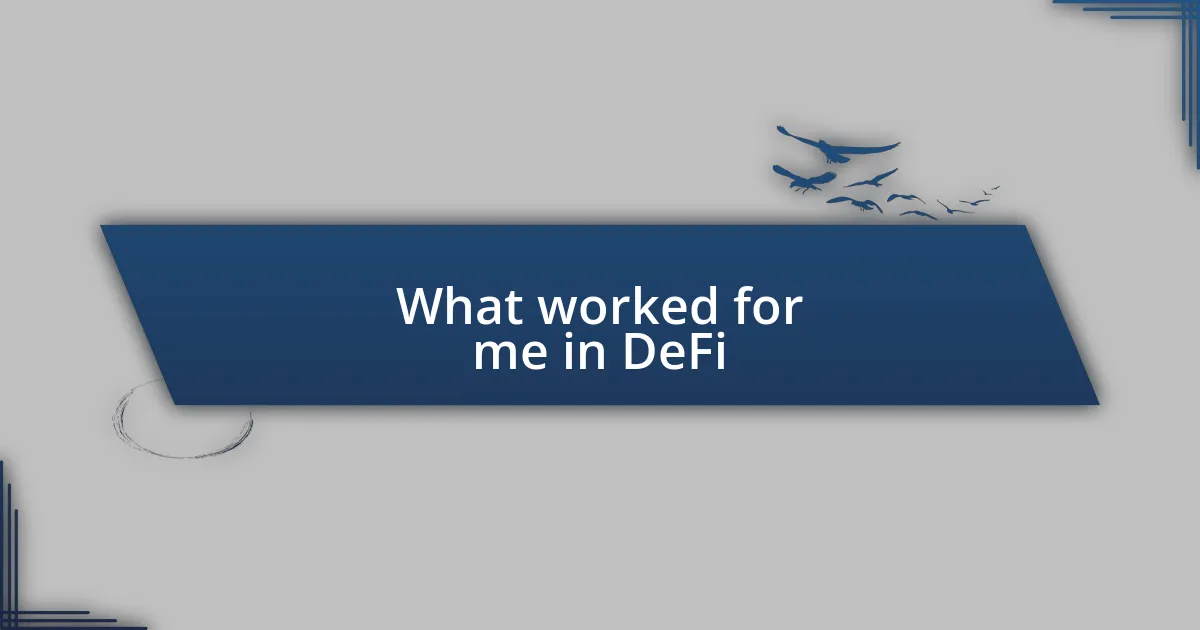Key takeaways:
- Ethereum interoperability is essential for fostering collaboration and innovation among different blockchains, enabling seamless data and asset exchange.
- Key protocols like Inter-Blockchain Communication (IBC), wrapped tokens, and atomic swaps facilitate efficient cross-chain interactions while addressing security vulnerabilities.
- Challenges such as differing protocols, security risks, and scalability need to be overcome to fully realize the potential of interoperability.
- Future developments, including Layer 2 solutions and standardized cross-chain messaging, could significantly enhance Ethereum’s ability to connect with other blockchain ecosystems.
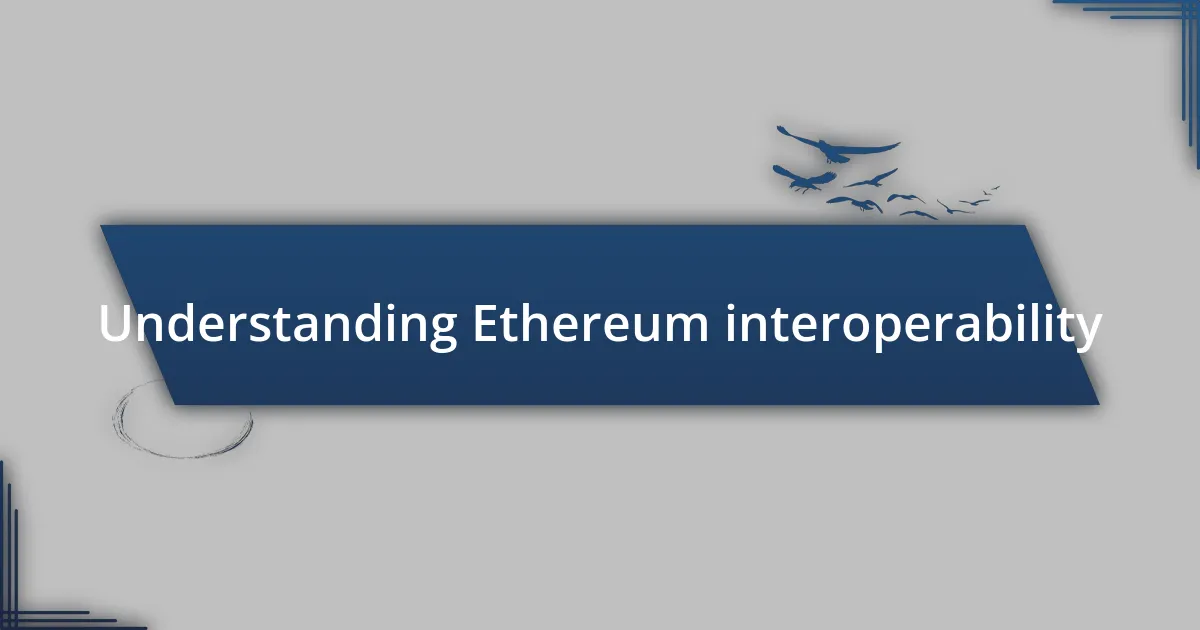
Understanding Ethereum interoperability
When I first dived into the world of Ethereum, the concept of interoperability struck me as both fascinating and crucial. It’s like having a translator in a room full of people speaking different languages. Without interoperability, Ethereum-based systems would isolate themselves, missing out on the benefits of collaboration and innovation.
The idea of different blockchains communicating with Ethereum can feel daunting. I remember grappling with how this interconnectedness could revolutionize the way we think about data and transactions. Have you ever thought about how frustrating it is when different apps don’t sync well? Ethereum interoperability aims to eliminate that barrier, creating a seamless experience across decentralized platforms.
As I explored further, I realized that interoperability isn’t just a tech buzzword; it’s about building a more integrated and collaborative ecosystem. It allows developers to leverage the strengths of various blockchains while addressing the challenges that come with fragmented networks. Isn’t it exciting to envision a future where assets can flow freely and securely between different platforms? That’s the power of Ethereum interoperability.
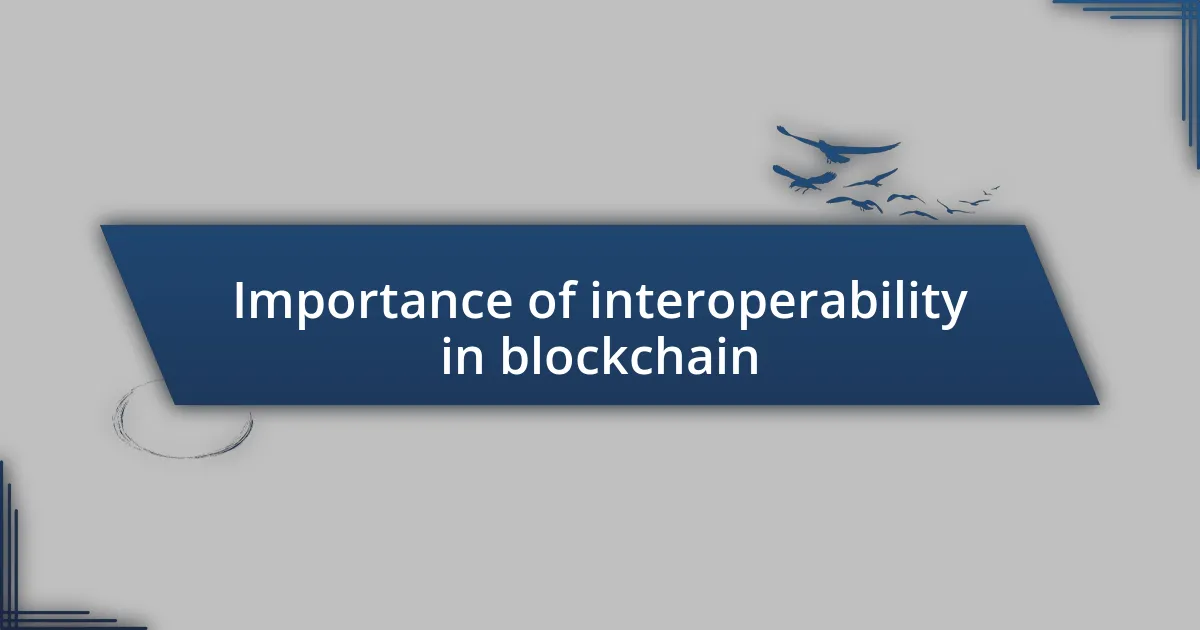
Importance of interoperability in blockchain
The importance of interoperability in blockchain cannot be overstated. From my experience, it is the foundation for a truly decentralized future. When I interact with different platforms, I often find myself longing for a smooth transition between systems, just like how seamlessly we switch between our favorite apps in everyday life. Interoperability will bridge those gaps, allowing diverse blockchain ecosystems to work together efficiently.
Consider a scenario where a smart contract on Ethereum needs to communicate with a supply chain blockchain. It’s like getting stuck in a traffic jam—nobody can move until everyone plays their part. With interoperability, we can navigate this complexity, ensuring that transactions and data flow effortlessly. This connection can propel innovation, creating new avenues for collaboration that I find incredibly inspiring.
Moreover, the potential for enhanced security through interoperability is something I’m deeply passionate about. When I first learned about the vulnerabilities in isolated networks, it made me appreciate how greater connectivity could fortify our defenses. By working together, blockchains can share threat information and reinforce each other’s security, ultimately leading to a more robust and resilient system for everyone involved.
| Aspect | Interoperable Blockchains |
|---|---|
| Isolation of Blockchains | Limited data sharing and collaboration |
| Efficiency | Streamlined processes and transactions |
| Innovation | New collaborative opportunities |
| Security | Shared defenses against vulnerabilities |
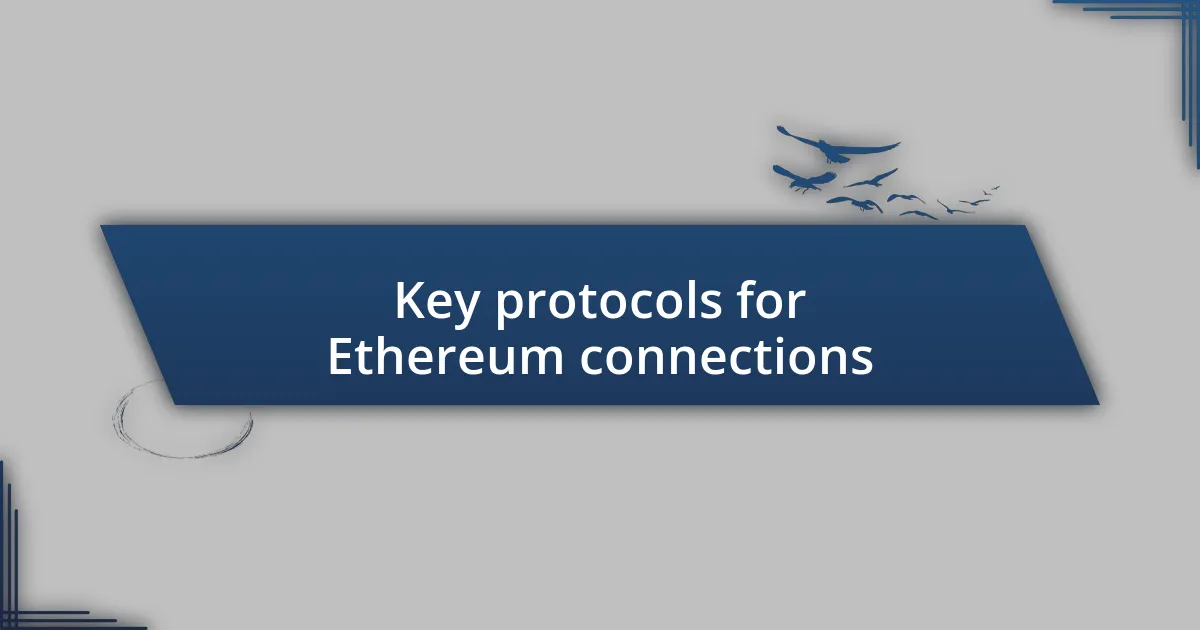
Key protocols for Ethereum connections
Key protocols for Ethereum connections
In the realm of Ethereum interoperability, several key protocols play a pivotal role in enabling seamless connections between different blockchains. I often reflect on the potential these protocols hold, as they can transform how we interact with decentralized applications across various networks. One standout that I frequently encounter is the Inter-Blockchain Communication (IBC) protocol, designed to facilitate token transfers and messaging between chains.
- Inter-Blockchain Communication (IBC): Important for enabling data and asset transfers across compatible chains.
- Wrapped Tokens: Allow assets from other blockchains to be used within Ethereum’s ecosystem through token wrapping.
- Bridge Protocols: These are essential tools that create links between different blockchains, maintaining security while allowing for efficient transactions.
- Atomic Swaps: Facilitate the exchange of cryptocurrencies between parties on different blockchains without intermediaries, ensuring trust and transparency.
It’s fascinating to visualize how these protocols work in practice. I remember the first time I used a bridge to transfer tokens between Ethereum and another blockchain—I felt like I was part of a grand experiment, witnessing firsthand how interconnectedness can reshape our digital interactions. These protocols not only simplify transactions but also enhance my understanding of what it means to be part of a broader blockchain ecosystem, bringing excitement about the future of decentralized technology.
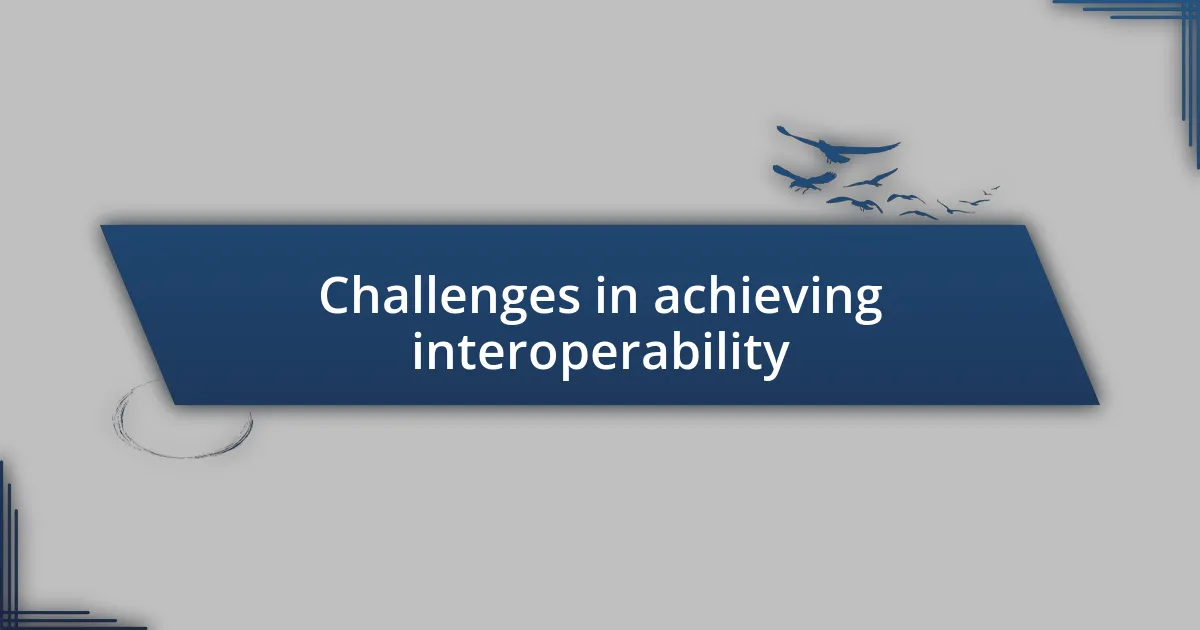
Challenges in achieving interoperability
Achieving interoperability in Ethereum involves navigating a complex landscape filled with technical challenges. One significant hurdle is the differing protocols and standards across various blockchains, which often leads to compatibility issues. I recall a time when I tried to swap tokens between two blockchains only to find that the protocols didn’t align. It was a frustrating reminder of how even simple transactions can become convoluted.
Another challenge lies in security vulnerabilities that emerge during cross-chain interactions. When connecting different ecosystems, there’s always a risk of exploits, which can jeopardize user assets. I remember feeling anxious when I read about hacks that occurred at bridge protocols because it made me question the safety of my digital assets. How can we trust these systems if they aren’t fortified against malicious attacks?
Finally, scalability issues also pose a significant barrier to effective interoperability. As more users engage with decentralized applications, the networks can become congested, leading to slower transaction times and higher fees. I often wonder if we’re sacrificing efficiency for connectivity. Balancing these competing demands is crucial if we want to realize the full potential of Ethereum interoperability.
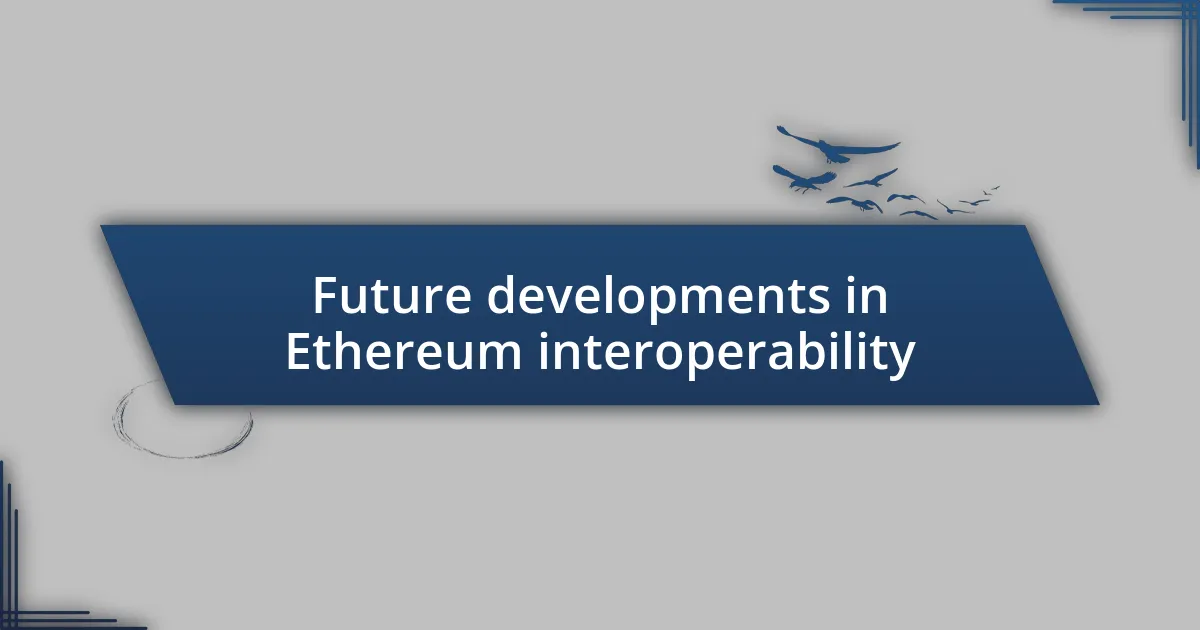
Future developments in Ethereum interoperability
As we look ahead, I find the development of Layer 2 solutions particularly promising for Ethereum interoperability. These scaling solutions, like Optimistic and ZK-rollups, aim to enhance transaction speeds and reduce costs while facilitating easier communication across different blockchains. When I first learned about these technologies, I felt a spark of hope because they could significantly alleviate some of the pressures we’ve faced in cross-chain interactions.
Moreover, the rise of standardized cross-chain messaging protocols could revolutionize how Ethereum interfaces with other blockchains. Imagine being able to execute a multi-chain transaction seamlessly, almost as if it’s a routine process. That thought excites me! It brings to mind opportunities for developers to create innovative applications that leverage assets from various blockchains, enhancing user experiences.
Finally, the continuous evolution of decentralized finance (DeFi) could play a pivotal role in bridging various ecosystems. As I sort through the ever-growing array of DeFi platforms, I feel a mix of excitement and curiosity. Will innovations in governance models make cross-chain interactions safer and more efficient? The more we examine these possibilities, the closer we get to realizing a truly interconnected blockchain landscape.
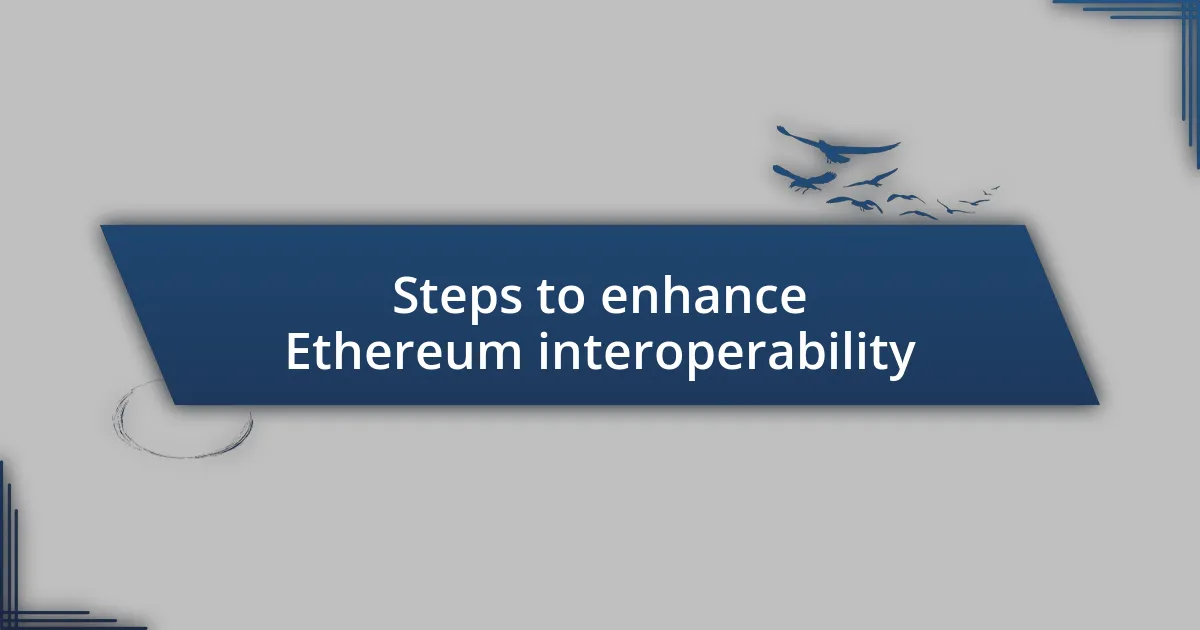
Steps to enhance Ethereum interoperability
To enhance Ethereum interoperability, one concrete step is adopting robust cross-chain frameworks. I remember the time I first experimented with bridging assets across different chains; it felt cumbersome and risky. I think if developers focused on creating seamless frameworks that allow smooth asset transfers and interactions, it would not only improve usability but also build trust within the blockchain community.
Another essential strategy lies in the implementation of interoperability standards. When I participated in discussions around the Ethereum Improvement Proposals (EIPs), the idea of a universal standard resonated with many. I believe having a common language, especially in smart contracts, would drastically reduce compatibility issues and foster collaboration among developers, leading to a richer ecosystem.
Moreover, enhancing developer education about existing interoperability solutions can cultivate innovation. I often think back to my own learning curve; diving into complex concepts without proper guidance can be daunting. By providing comprehensive resources and community support, I’m convinced we can empower more creators to harness the full potential of interoperability, ultimately enriching user experiences in the Ethereum space.

